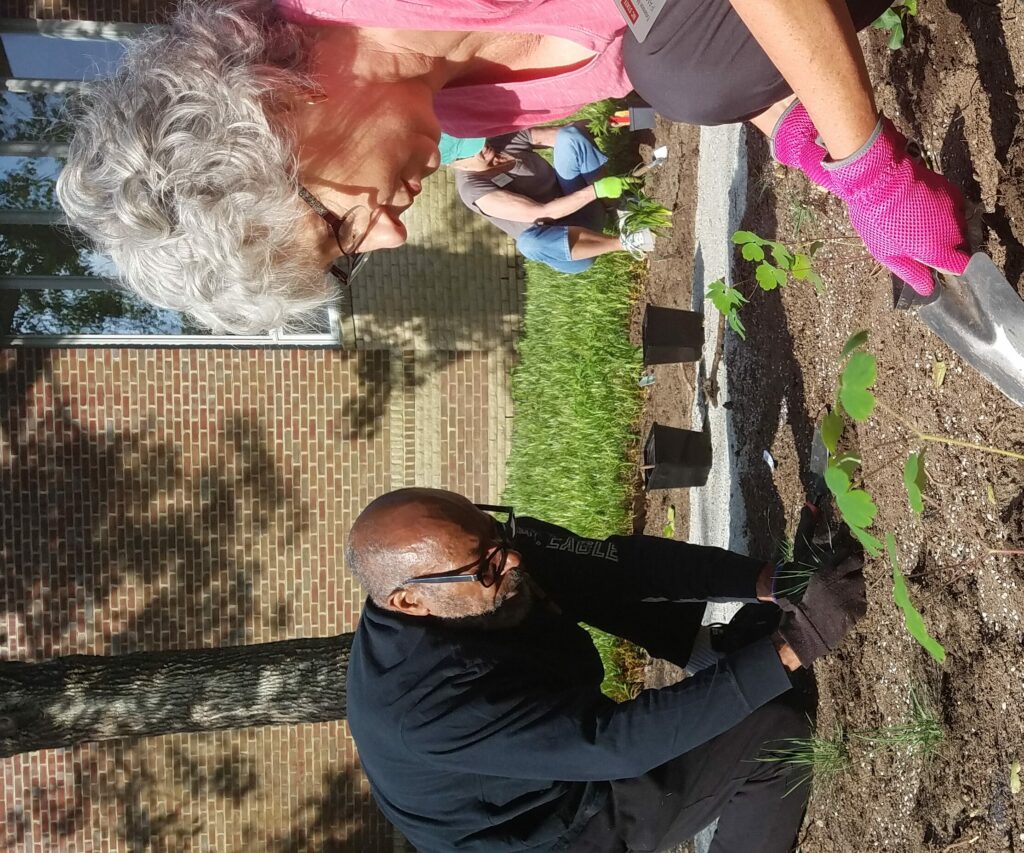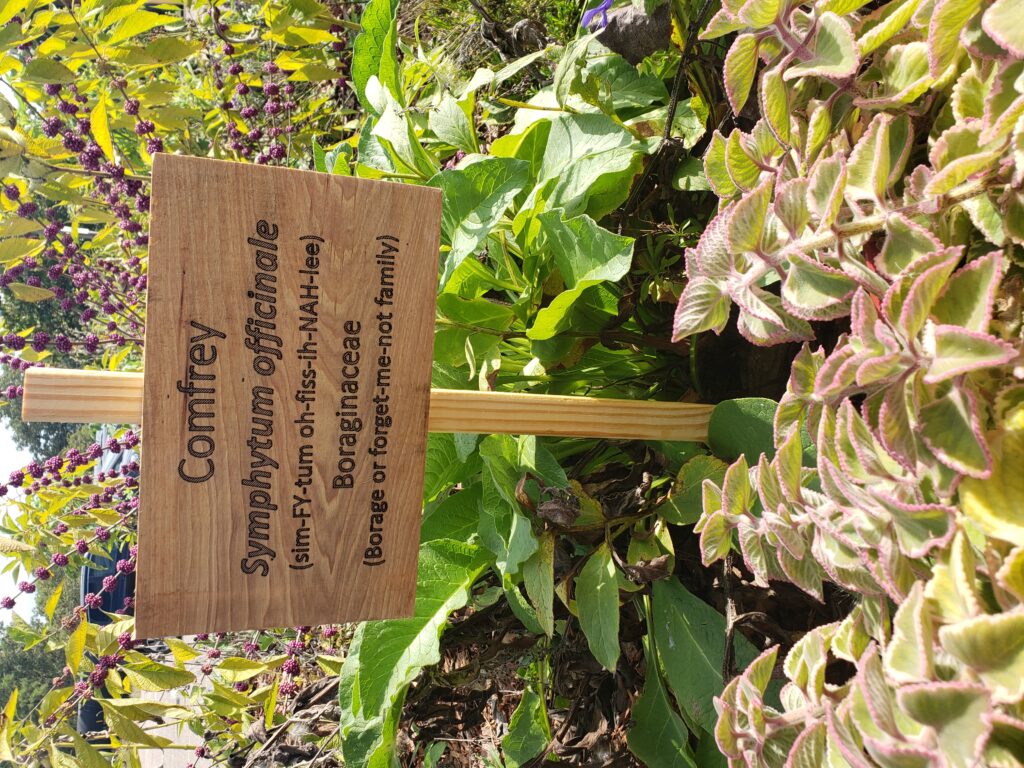Promoting Pollinators and Native Plants
go.ncsu.edu/readext?847369
en Español / em Português
El inglés es el idioma de control de esta página. En la medida en que haya algún conflicto entre la traducción al inglés y la traducción, el inglés prevalece.
Al hacer clic en el enlace de traducción se activa un servicio de traducción gratuito para convertir la página al español. Al igual que con cualquier traducción por Internet, la conversión no es sensible al contexto y puede que no traduzca el texto en su significado original. NC State Extension no garantiza la exactitud del texto traducido. Por favor, tenga en cuenta que algunas aplicaciones y/o servicios pueden no funcionar como se espera cuando se traducen.
Português
Inglês é o idioma de controle desta página. Na medida que haja algum conflito entre o texto original em Inglês e a tradução, o Inglês prevalece.
Ao clicar no link de tradução, um serviço gratuito de tradução será ativado para converter a página para o Português. Como em qualquer tradução pela internet, a conversão não é sensivel ao contexto e pode não ocorrer a tradução para o significado orginal. O serviço de Extensão da Carolina do Norte (NC State Extension) não garante a exatidão do texto traduzido. Por favor, observe que algumas funções ou serviços podem não funcionar como esperado após a tradução.
English
English is the controlling language of this page. To the extent there is any conflict between the English text and the translation, English controls.
Clicking on the translation link activates a free translation service to convert the page to Spanish. As with any Internet translation, the conversion is not context-sensitive and may not translate the text to its original meaning. NC State Extension does not guarantee the accuracy of the translated text. Please note that some applications and/or services may not function as expected when translated.
Collapse ▲Pollinators are critical for fruitful gardens, productive farms, and healthy ecosystems, but pollinator populations are in decline in many areas because of habitat loss. One of the most effective ways we can support pollinators is to provide habitat by planting the species they need to survive across our communities. Native plants are particularly important for native pollinators and wildlife.
Across North Carolina, volunteers with the Extension Master Gardener℠ program educate the public about the connection between pollinators, gardens, native plants and wildlife. Here are a few examples of how Master Gardener℠ volunteers encouraged residents to plant pollinator and wildlife friendly species in 2021.
Moore County

Master Gardener volunteers install the Moore County Books and Bees Garden. Photo by Savanah Laur.
Master Gardener volunteers partnered with the Southern Pines Public Library to install the “Books and Bees Garden” that provides habitat for native bees and beneficial insects. To extend the garden’s educational value, Master Gardener volunteers developed an interactive map and brochure to share information about the plants used in the garden, as well as general information about the positive impact of pollinators and beneficial insects.
Henderson County

Master Gardener volunteers install plants at the Western Carolina Community Action natural play area. Photo by Amy Smith.
Master Gardener volunteers designed and installed plantings to complement a natural playground at a daycare center managed by Western Carolina Community Action. Low-maintenance, native plants were chosen to serve as teaching tools and to complement play elements made of wood, rock and other natural materials.
Montgomery County

Plant signage in the Montgomery County Pollinator Garden. photo by Kaitlyn Lamaster.
A partnership between Master Gardener volunteers and the Montgomery County Beekeepers Association provided the community with a fantastic place to learn about both native plants and pollinators. Master Gardener volunteers renovated a large pollinator garden adjacent to a local art gallery and added signage that identifies each plant in the garden by family, genus, species, common name, and Latin pronunciation.
Sampson County

Extension Master Gardener volunteers in Sampson County promote pollinator friendly plants.
At the N.C. Cooperative Extension, Sampson County center, Master Gardener volunteers created a pollinator demonstration garden to illustrate how homeowners, municipalities, businesses, and farmers can plant and maintain pollinator gardens in their landscapes. Four additional gardens are under development through the community.
Caldwell County

Practicing what they preach, Master Gardener volunteers challenged one another to add native plants to their personal gardens. The “Nature’s Best Hope Garden Challenge” asked Master Gardener volunteers to draw up a plan, list what plants they used, and take pictures of their progress. They also encouraged one another to share the challenge with a neighbor.
Learn more about how you can be part of the NC State Extension Master Gardener program!

Read the 2021 Annual Report to explore more examples of how volunteers with the Extension Master Gardener℠ program share their knowledge to help North Carolinians learn and grow.
Planting for Pollinators & Wildlife
Explore these NC State Extension resources to learn how to make your property more pollinator and wildlife friendly:
- Wildlife Friendly Landscapes
- Landscaping for Wildlife with Native Plants,
- Managing Backyards and Other Urban Habitats for Birds,
- Butterflies in Your Backyard,
- Reptiles and Amphibians in Your Backyard.
- Planning a Wildlife Habitat
- Native Plants Chapter in the Extension Gardener Handbook
- Plants to Attract Wildlife – In the left column “Landscape” section, click on “Attracts” then choose the species you wish to create habitat for
- Bees of North Carolina: An Identification Guide


